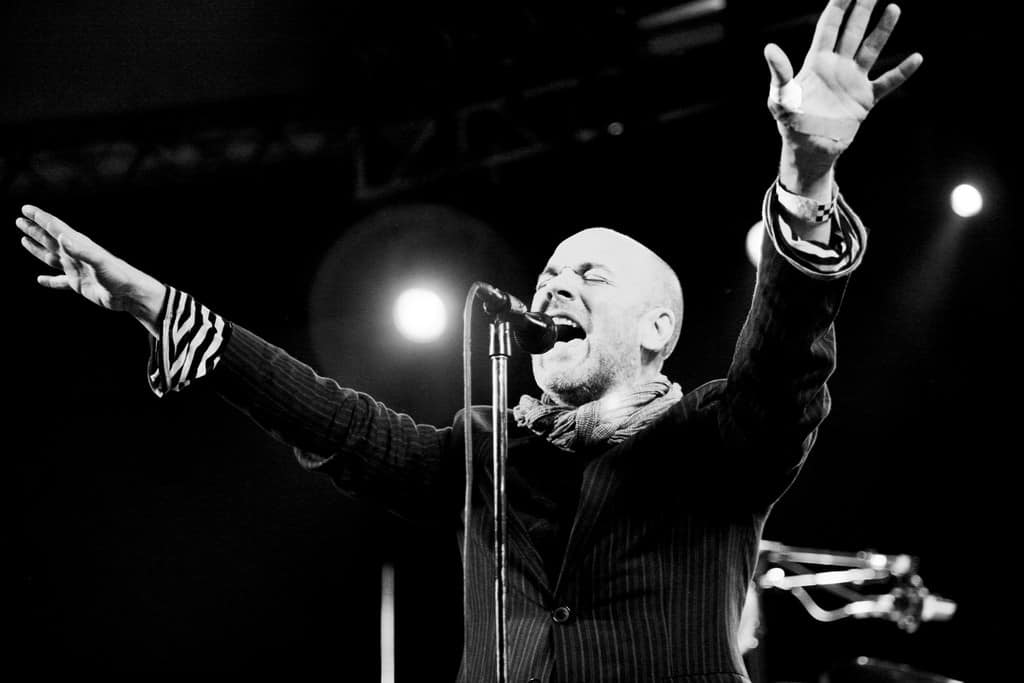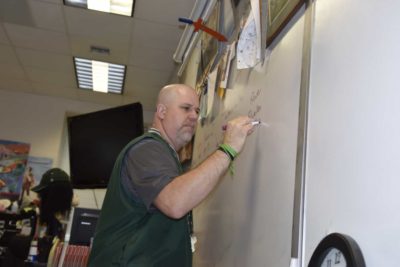Everybody hurts. Sometimes.
Teach for 20 years in public high schools and you become entrenched in the lives of young people. Thousands of them. Literally thousands.
If you take the vocation of being a teacher seriously, then that investment in young people is not confined to the four walls of a classroom and not restricted by one or two school years. You will be invited to celebrate their weddings, meet their children, even work with a few in the same school. And those dividends are worth more than the paycheck.
But you will help families say goodbye to them as well.
Attending the funeral of a former student who seems to have his/her whole life to look forward to is one too many. Yes, there are tragic events that occur, but there are also other forces at work in the lives of many of our students that while unseen to the naked eye could be confronted to give the possibility of renewal and reclamation — if we are willing to invest more in our kids.
Addiction, depression, and hopelessness are becoming more prevalent in today’s youth, and this public school teacher can emphatically state that it is causing us to lose too many of our young people. And while society as a whole can debate the extent to which mental health issues should be dealt with, there should be no doubt whatsoever that more should be done.
I teach in one of the larger school systems in the state of North Carolina. In a workshop during pre-planning for this new school year, I was presented with rather disturbing statistics shared by our school’s social worker.
To summarize, social workers in my school system served 7,688 individual students for an average of 248 students per social worker. Those social workers received 13,995 different referrals and provided 21,716 different interventions — 192 of them were interventions for suicide which is a 53 percent increase from the previous school year.
Those numbers are for ONE school district in ONE school year. And that was only what was reported.
It is rather sobering that tragedy becomes the very instance that forces us to consider preemptive actions on mental health. Just like the idea that we can physically do things to make our bodies healthier, we can do the same for our emotional and mental well-being.
Because “everybody hurts.” But not everyone gets a chance to heal.
Think opioid epidemic. Think cyberbullying. Think xenophobia. Think homophobia. Think white supremacists. Think “The Wall”. Think transgender ban. Think Muslim ban.
Then think of how that is just a slice of what is going on. To be frank, it is no wonder why so many of our students look for ways to not hurt so much in a society that refuses to acknowledge that “everybody hurts.”
I am not convinced that people who take their own lives are performing selfish acts. If you have listened to people who suffer from depression or severe mental issues, it becomes apparent that the idea of suicide for many is actually a last resort because so many other options have not either worked or never presented themselves. Obstacles for healing have been placed in their way in the name of profit or taboo.
I am convinced that addiction is not a choice as much as it is a sickness, a disease, and every time there is an active period of substance abuse, the one thing that gets most compromised is the ability to rationally think about what is happening. It is almost like losing the very capacity to make healthy decisions.
R.E.M.’s song “Everybody Hurts” has come to mind for many reasons here in the last few days. During that presentation from the school social worker, I googled the lyrics on my phone. Afterwards, I listened to the song.
The words are sweet, concise, heartfelt, and set to a somber, yet inviting rhythm. Stipe’s voice is clear and unfettered.
Later, I took time to look at the video made for the song. It’s been years since I saw it, yet the metaphor of the traffic jam with each individual contemplating what is happening in his/her life that keeps that person from being a shiny, happy person is like watching a school day unfold in the halls of the buildings.
There are a lot of struggling young people in schools, affluent and poverty stricken alike.
Then I realize that the video is shot on I-10 in Texas (primarily in San Antonio).
That’s the same major thoroughfare that runs through Houston which has just been devastated by Hurricane Harvey.
Yes, houses and schools can be rebuilt. Roads resurfaced. Material possessions can be replaced. Yet “homes” and “pathways” and “memories” cannot be simply restored. Attached to those are mental, emotional, and spiritual ties that need the most attention and most care. Life altering events can cause many teens to be at greater risk of suicidal thoughts.
For many students, school might be the firmest “constant” in a life that seems to be hopeless and alone. If we as a society were serious about the welfare of our students, then we would make more of an effort to offer avenues for help. We could make it a priority to staff schools with more social workers, give teachers more resources to confront issues that affect students’ wellbeing, and stop using a profit line as the final determination of health in society.
The same playlist that has “Everybody Hurts” also includes some Soundgarden and Linkin Park. I know that Chris Cornell is not foreign to today’s high school students. His music spans generations, and Chester Bennington is on a lot of student iPhones. There are students who wear Kurt Cobain t-shirts who weren’t even born until a decade after his death. Does that mean these students are contemplating the same end these musical giants had in the physical world? Maybe not.
Maybe it might be a way to not let go and to “hold on.”
Either way, what a powerful force it can be to always give students a means to “hold on” and not “be alone” in the very setting that most will inhabit — schools.
“Everybody Hurts”
When your day is long
And the night, the night is yours alone
When you’re sure you’ve had enough
Of this life, well hang onDon’t let yourself go
‘Cause everybody cries
And everybody hurts sometimesSometimes everything is wrong
Now it’s time to sing along
When your day is night alone (Hold on, hold on)
If you feel like letting go (Hold on)
If you think you’ve had too much
Of this life, well hang onEverybody hurts
Take comfort in your friends
Everybody hurts
Don’t throw your hand, oh noDon’t throw your hand
If you feel like you’re alone
No, no, no, you are not aloneIf you’re on your own in this life
The days and nights are long
When you think you’ve had too much of this life to hang onWell, everybody hurts sometimes
Everybody cries
Everybody hurts sometimes
And everybody hurts sometimesSo hold on, hold on
Hold on, hold on, hold on, hold on, hold on, hold on
Everybody hurts



